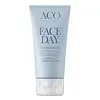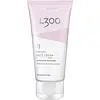What's inside
What's inside
 Key Ingredients
Key Ingredients

 Benefits
Benefits

 Concerns
Concerns

 Ingredients Side-by-side
Ingredients Side-by-side

Water
Skin ConditioningGlycerin
HumectantCetearyl Alcohol
EmollientIsopropyl Myristate
EmollientPropylene Glycol
HumectantCaprylic/Capric Triglyceride
MaskingButyrospermum Parkii Butter
Skin ConditioningTapioca Starch
Tocopheryl Acetate
AntioxidantDimethicone
EmollientCetyl Alcohol
EmollientSodium Hyaluronate
HumectantPEG-20 Stearate
EmulsifyingGlyceryl Stearate
EmollientPEG-100 Stearate
Ammonium Acryloyldimethyltaurate/Vp Copolymer
Sodium Hydroxide
BufferingCitric Acid
BufferingPolymethylsilsesquioxane
Caprylyl Glycol
EmollientPhenoxyethanol
PreservativeWater, Glycerin, Cetearyl Alcohol, Isopropyl Myristate, Propylene Glycol, Caprylic/Capric Triglyceride, Butyrospermum Parkii Butter, Tapioca Starch, Tocopheryl Acetate, Dimethicone, Cetyl Alcohol, Sodium Hyaluronate, PEG-20 Stearate, Glyceryl Stearate, PEG-100 Stearate, Ammonium Acryloyldimethyltaurate/Vp Copolymer, Sodium Hydroxide, Citric Acid, Polymethylsilsesquioxane, Caprylyl Glycol, Phenoxyethanol
Water
Skin ConditioningEthylhexyl Stearate
EmollientUrea
BufferingSodium Chloride
MaskingCaprylic/Capric Triglyceride
MaskingGlyceryl Stearates
EmollientCetyl Alcohol
EmollientPolyglyceryl-6 Palmitate/Succinate
EmulsifyingCetearyl Alcohol
EmollientTocopheryl Acetate
AntioxidantLactic Acid
BufferingSqualane
EmollientBehenic Acid
CleansingCetyl Behenate
Isostearyl Isostearate
EmollientPotassium Cetyl Phosphate
EmulsifyingDimethicone
EmollientXanthan Gum
EmulsifyingTromethamine
BufferingPhenoxyethanol
PreservativeBenzoic Acid
MaskingDehydroacetic Acid
PreservativeWater, Ethylhexyl Stearate, Urea, Sodium Chloride, Caprylic/Capric Triglyceride, Glyceryl Stearates, Cetyl Alcohol, Polyglyceryl-6 Palmitate/Succinate, Cetearyl Alcohol, Tocopheryl Acetate, Lactic Acid, Squalane, Behenic Acid, Cetyl Behenate, Isostearyl Isostearate, Potassium Cetyl Phosphate, Dimethicone, Xanthan Gum, Tromethamine, Phenoxyethanol, Benzoic Acid, Dehydroacetic Acid
Ingredients Explained
These ingredients are found in both products.
Ingredients higher up in an ingredient list are typically present in a larger amount.
This ingredient is an emollient, solvent, and texture enhancer. It is considered a skin-softener by helping the skin prevent moisture loss.
It helps thicken a product's formula and makes it easier to spread by dissolving clumping compounds.
Caprylic Triglyceride is made by combining glycerin with coconut oil, forming a clear liquid.
While there is an assumption Caprylic Triglyceride can clog pores due to it being derived from coconut oil, there is no research supporting this.
Learn more about Caprylic/Capric TriglycerideCetearyl alcohol is a mixture of two fatty alcohols: cetyl alcohol and stearyl alcohol. It is mainly used as an emulsifier. Emulsifiers help prevent the separation of oils and products. Due to its composition, it can also be used to thicken a product or help create foam.
Cetearyl alcohol is an emollient. Emollients help soothe and hydrate the skin by trapping moisture.
Studies show Cetearyl alcohol is non-toxic and non-irritating. The FDA allows products labeled "alcohol-free" to have fatty alcohols.
This ingredient is usually derived from plant oils such as palm, vegetable, or coconut oils. There is debate on whether this ingredient will cause acne.
Due to the fatty acid base, this ingredient may not be Malassezia folliculitis safe.
Learn more about Cetearyl AlcoholCetyl Alcohol is a fatty alcohol. Fatty Alcohols are most often used as an emollient or to thicken a product.
Its main roles are:
Though it has "alcohol" in the name, it is not related to denatured alcohol or ethyl alcohol.
The FDA allows products labeled "alcohol-free" to have fatty alcohols.
Learn more about Cetyl AlcoholDimethicone is a type of synthetic silicone created from natural materials such as quartz.
What it does:
Dimethicone comes in different viscosities:
Depending on the viscosity, dimethicone has different properties.
Ingredients lists don't always show which type is used, so we recommend reaching out to the brand if you have questions about the viscosity.
This ingredient is unlikely to cause irritation because it does not get absorbed into skin. However, people with silicone allergies should be careful about using this ingredient.
Note: Dimethicone may contribute to pilling. This is because it is not oil or water soluble, so pilling may occur when layered with products. When mixed with heavy oils in a formula, the outcome is also quite greasy.
Learn more about DimethiconePhenoxyethanol is a preservative that has germicide, antimicrobial, and aromatic properties. Studies show that phenoxyethanol can prevent microbial growth. By itself, it has a scent that is similar to that of a rose.
It's often used in formulations along with Caprylyl Glycol to preserve the shelf life of products.
Tocopheryl Acetate is AKA Vitamin E. It is an antioxidant and protects your skin from free radicals. Free radicals damage the skin by breaking down collagen.
One study found using Tocopheryl Acetate with Vitamin C decreased the number of sunburned cells.
Tocopheryl Acetate is commonly found in both skincare and dietary supplements.
Learn more about Tocopheryl AcetateWater. It's the most common cosmetic ingredient of all. You'll usually see it at the top of ingredient lists, meaning that it makes up the largest part of the product.
So why is it so popular? Water most often acts as a solvent - this means that it helps dissolve other ingredients into the formulation.
You'll also recognize water as that liquid we all need to stay alive. If you see this, drink a glass of water. Stay hydrated!
Learn more about Water